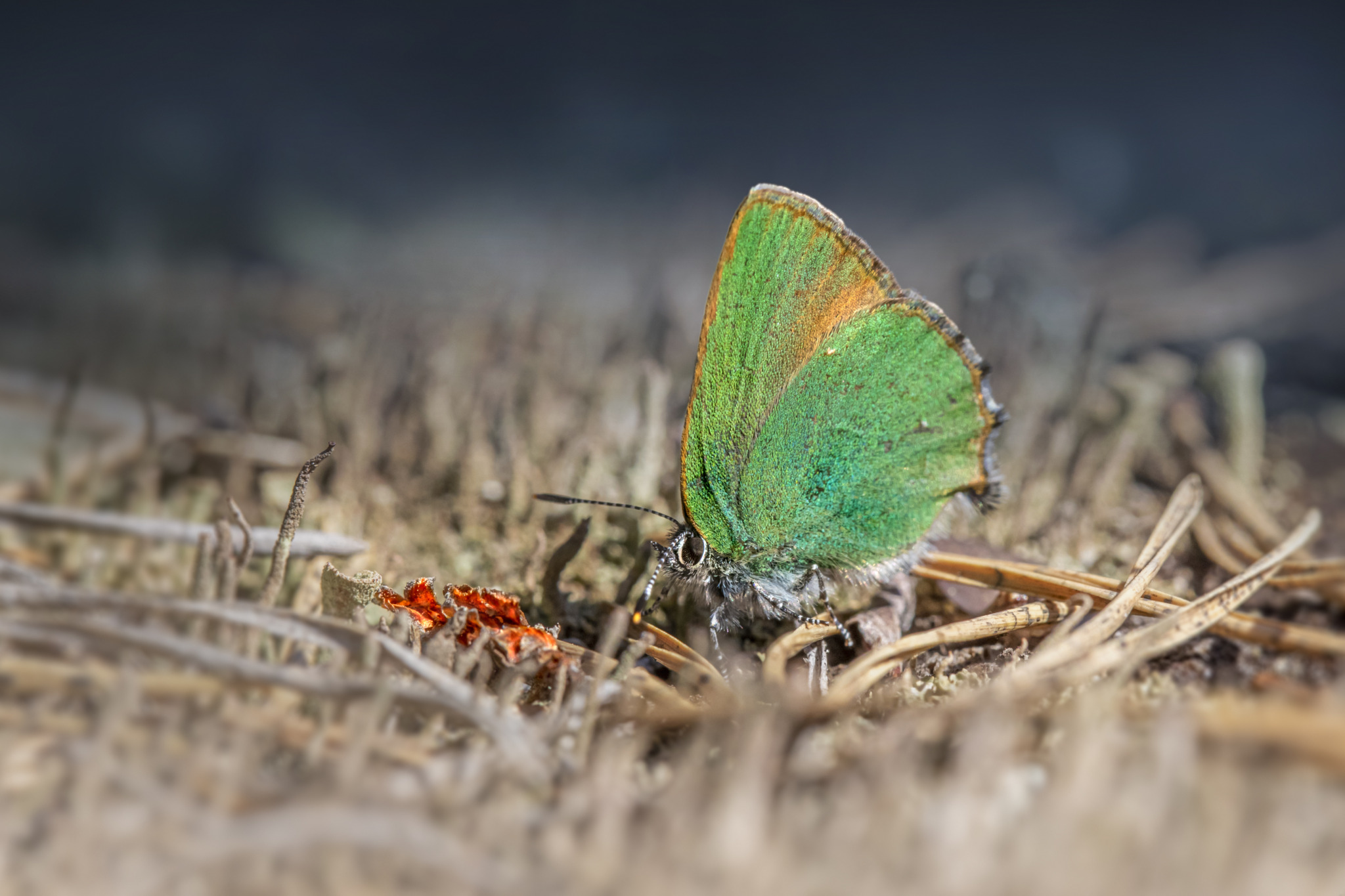🦋 Green Hairstreak (Callophrys rubi)
The Green Hairstreak is a small but vivid butterfly belonging to the family Lycaenidae (the blues, coppers, and hairstreaks). It is renowned for its bright emerald-green underwings, which provide both camouflage and a striking display in the right light.
🧬 Taxonomy
- Kingdom: Animalia
- Phylum: Arthropoda
- Class: Insecta
- Order: Lepidoptera
- Family: Lycaenidae
- Genus: Callophrys
- Species: C. rubi
🌈 Identification
- Wingspan: 25–30 mm
- Coloration:
- Underside: Brilliant metallic green with a white line, sometimes faint or broken
- Upperside: Brown and rarely visible as they never open wings at rest
- Antennae: White and black banded with small clubs
- Sexual Dimorphism: Very subtle; males and females look similar
🔍 Key feature: The wings are always held closed when at rest—so only the green underside is visible, making them incredibly cryptic among green vegetation.
🐛 Life Cycle
🥚 Egg
- Laid singly on young shoots or flower buds of host plants
- Tiny, pale green, and round
- Laid from April to June
🐛 Larva (Caterpillar)
- Green with pale yellow markings, very well-camouflaged
- Shaped like a slug, typical of Lycaenid caterpillars
- Feeds on flowers and young leaves of host plants
- Has a mutualistic relationship with ants in some areas—ants protect the larvae in exchange for sugary secretions
🟠 Pupa
- Pupates in leaf litter or just below the soil surface
- Overwinters as a pupa
- Emerges in early to mid-spring (March to June depending on location)
🦋 Adult
- Flies from March to July depending on altitude and climate
- Typically one generation per year
🌍 Habitat & Range
- Distribution: Widely distributed across Europe, North Africa, and parts of Asia
- Common in the British Isles, Scandinavia, and Central Europe
- Preferred habitats:
- Heathlands
- Scrubland
- Chalk downland
- Woodland edges and clearings
- Moorland and sand dunes
📌 Microhabitat: Prefers warm, sunny locations with patchy vegetation and diverse low-growing plants
🌱 Food Plants (Larval Host Plants)
The Green Hairstreak is polyphagous (feeds on a wide range of plants), including:
- Bilberry (Vaccinium myrtillus)
- Bird’s-foot trefoil (Lotus corniculatus)
- Gorse (Ulex europaeus)
- Broom (Cytisus scoparius)
- Rockrose (Helianthemum nummularium)
- Dogwood, buckthorn, and others depending on region
🍯 Adult Nectar Sources
- Buttercups
- Dandelions
- Bluebells
- Bugle
- Bramble flowers
They don’t stay long on any one flower—frequently darting between blooms.
🧠 Behavior & Ecology
- Territorial: Males often perch in sunny spots and defend small territories
- Flight pattern: Fast, jerky, and low to the ground
- Camouflage: The green underside perfectly matches leaves and grass—extremely hard to spot when resting
- Symbiosis: Sometimes forms mutualistic relationships with ants (especially in southern populations)
🛡️ Conservation Status
- Currently not globally threatened, but locally declining in some areas due to:
- Habitat loss
- Agricultural intensification
- Overgrazing and scrub removal
🟢 Conservation Efforts:
- Maintaining open, sunny scrubby habitats
- Encouraging host plants in reserves and public green spaces
- Monitoring by butterfly conservation groups (e.g., Butterfly Conservation UK)
🧭 Field ID Tips
- Look for them from mid-spring to early summer
- Scan low vegetation and sunny, sheltered areas
- Best seen during mid-morning to early afternoon on warm, calm days
- Watch for darting green flashes near bramble or gorse bushes
📸
Visited 918 times, 8 visit(s) today
Views: 4564
Subscribe to the newsletter:
